Gasshō,
It does seem as if my focus these days is always on the Farm (which it is), and I must start this communication with an acknowledgement of our recent residential retreat at Vallombrosa Center, in Menlo Park, CA. It was our first gathering in more than five years. We were at Vallombrosa for our traditional New Year’s retreat and then Covid hit and that was that.
This was our first time at the Center in summer. We’re used to bringing in the New Year in very cold temperatures, and we all did notice that July is way nicer. It’s the Bay Area of California. The temperatures are perfect, everything is in bloom; they’ve made wonderful, gorgeous and inspiring gardens dedicated to St. Francis, St. Teresa of Calcutta and others. All in all, it was a marvelous reminder of just how much we enjoy gathering in person. So, we’ve scheduled another for next summer. Dates will be announced ere long.
Speaking of gatherings, we are actively pursuing another venue, one that could accommodate the kind of large group we were at Vallombrosa as well as a smaller one (16 participants plus facilitators) for a There Is Nothing Wrong with You retreat. We’re hoping for somewhere fairly close to Western Washington for ease of travel, anywhere on the West Coast would do, so please let us know if you know of a possibility.
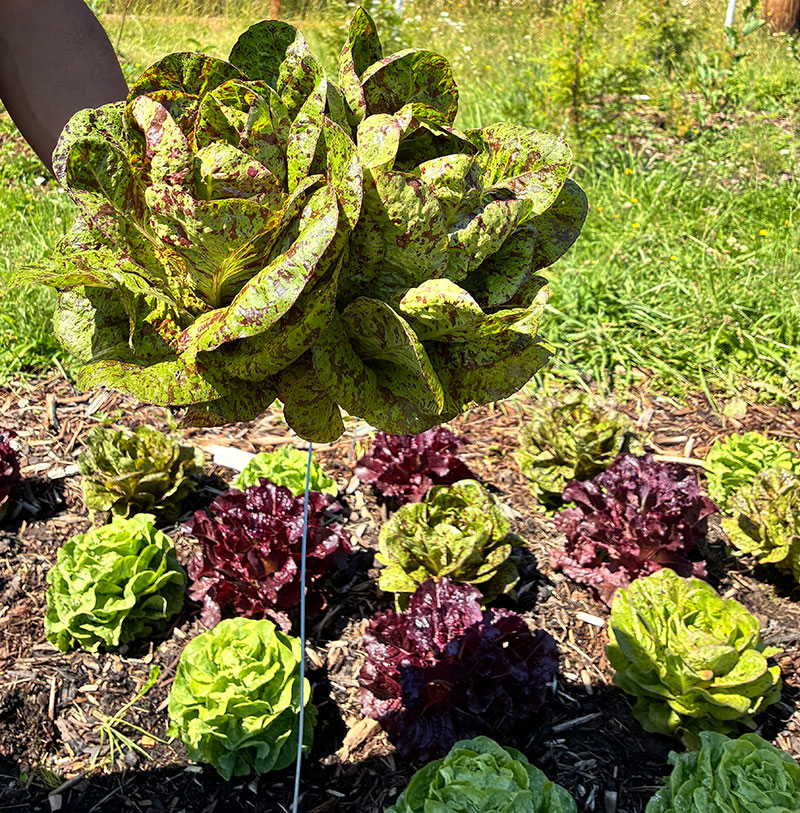 |
Back to The Farm! We just delivered the last of more than 100 heads of lettuce to the Food Bank. Some of the remaining heads will stay in the ground to produce seeds and others will join the compost pile to produce more excellent soil for the next batch of seeds that are on their way to becoming the next crop of lettuce. 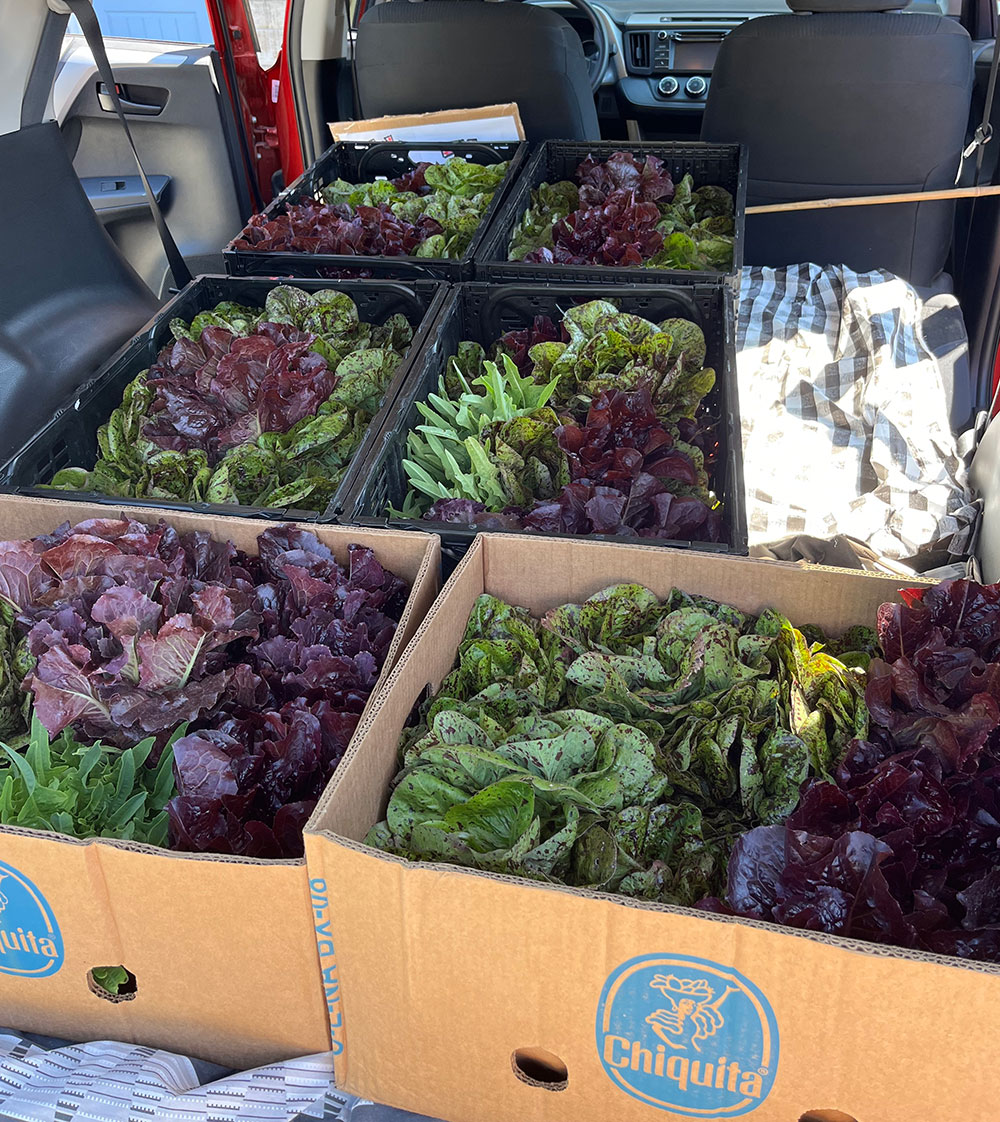 |
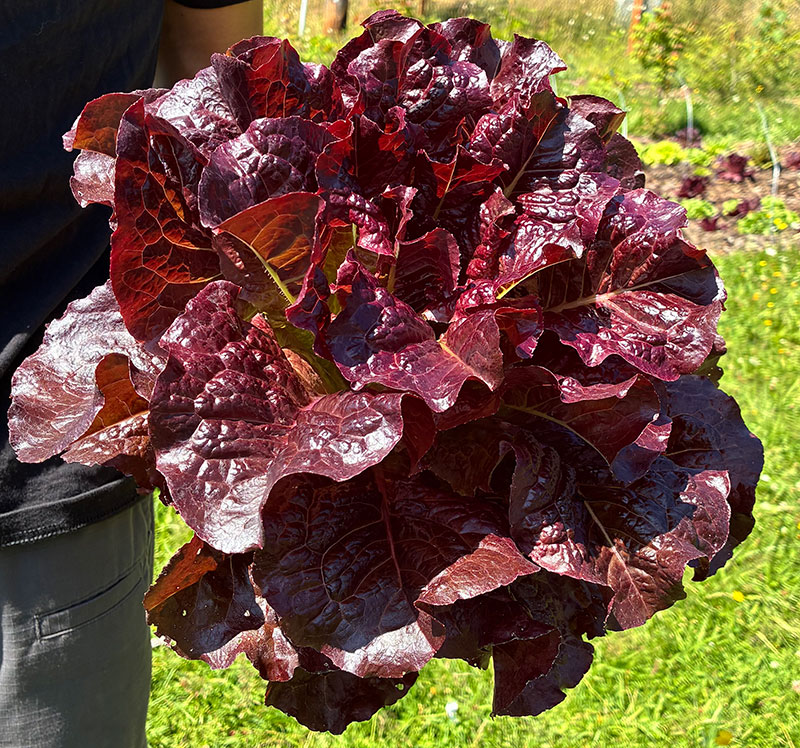 When Jen delivered the first heads one of the volunteers exclaimed, “Oh, those are so beautiful. Can I have one?” She was right. They are stunners!
When Jen delivered the first heads one of the volunteers exclaimed, “Oh, those are so beautiful. Can I have one?” She was right. They are stunners!
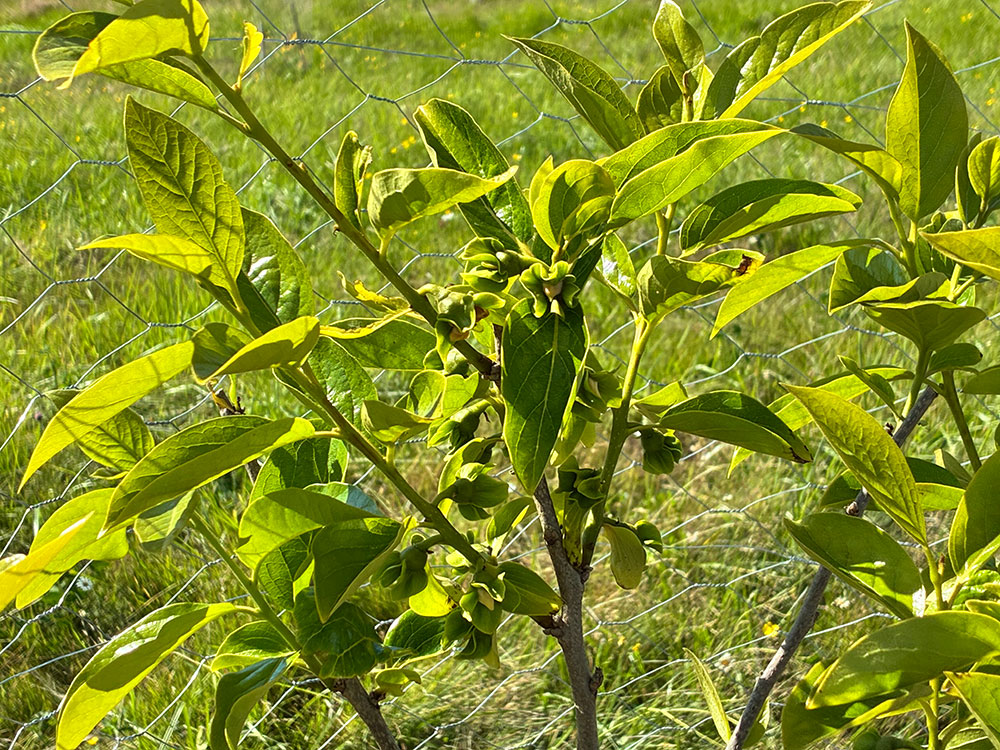 Everything is coming along beautifully. The tiny trees are outgrowing their poultry netting “dresses” designed to thwart passing deer. Here’s a picture of the Fuyu persimmon, small as it is, blossoming and beginning to produce persimmons.
Everything is coming along beautifully. The tiny trees are outgrowing their poultry netting “dresses” designed to thwart passing deer. Here’s a picture of the Fuyu persimmon, small as it is, blossoming and beginning to produce persimmons.
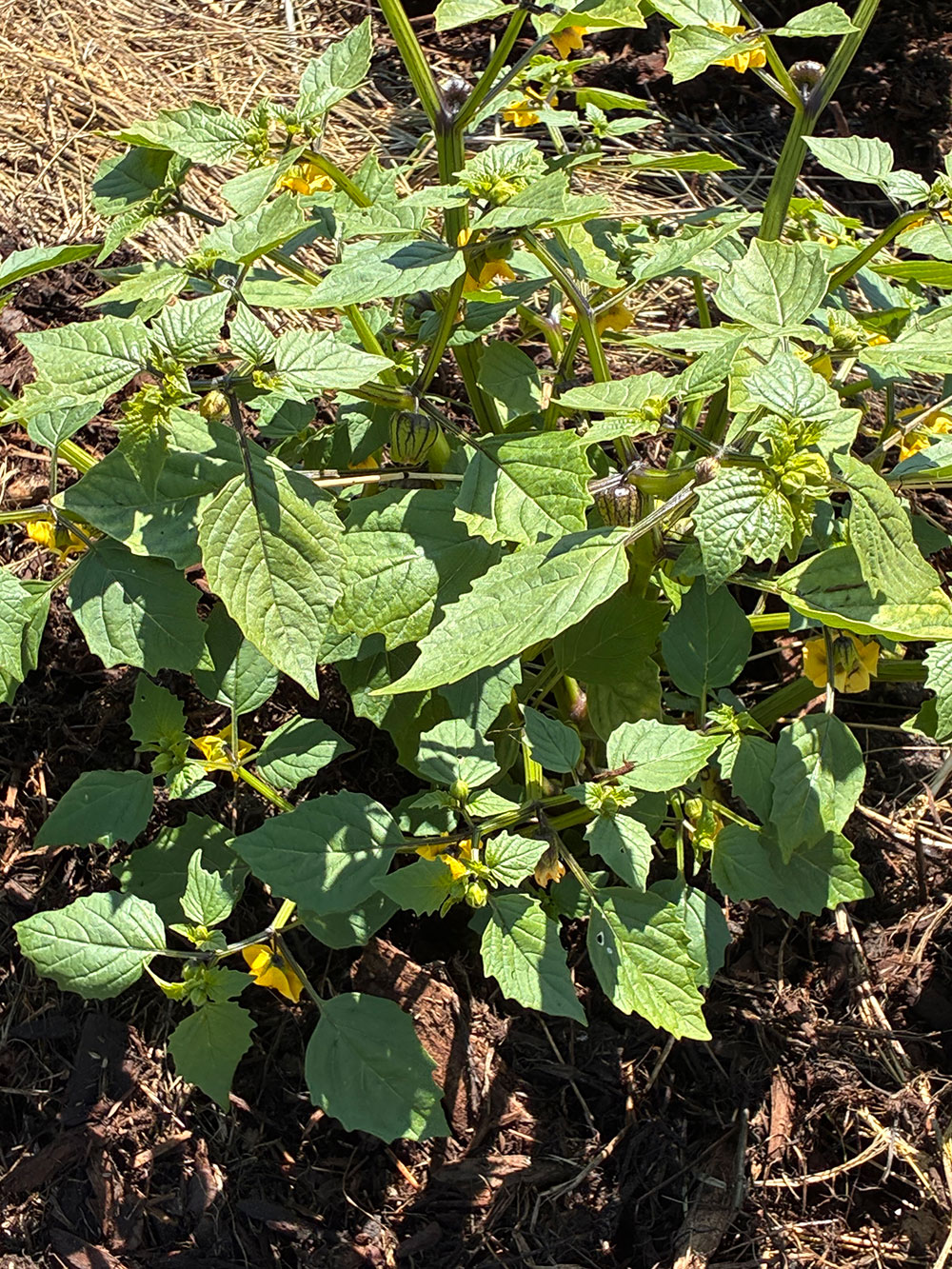 |
The tomatoes planted in the beds raised by piling up the clods of dirt from the drainage ditches are thriving. Here’s a tomatillo beginning to produce the husks that contain the fruit.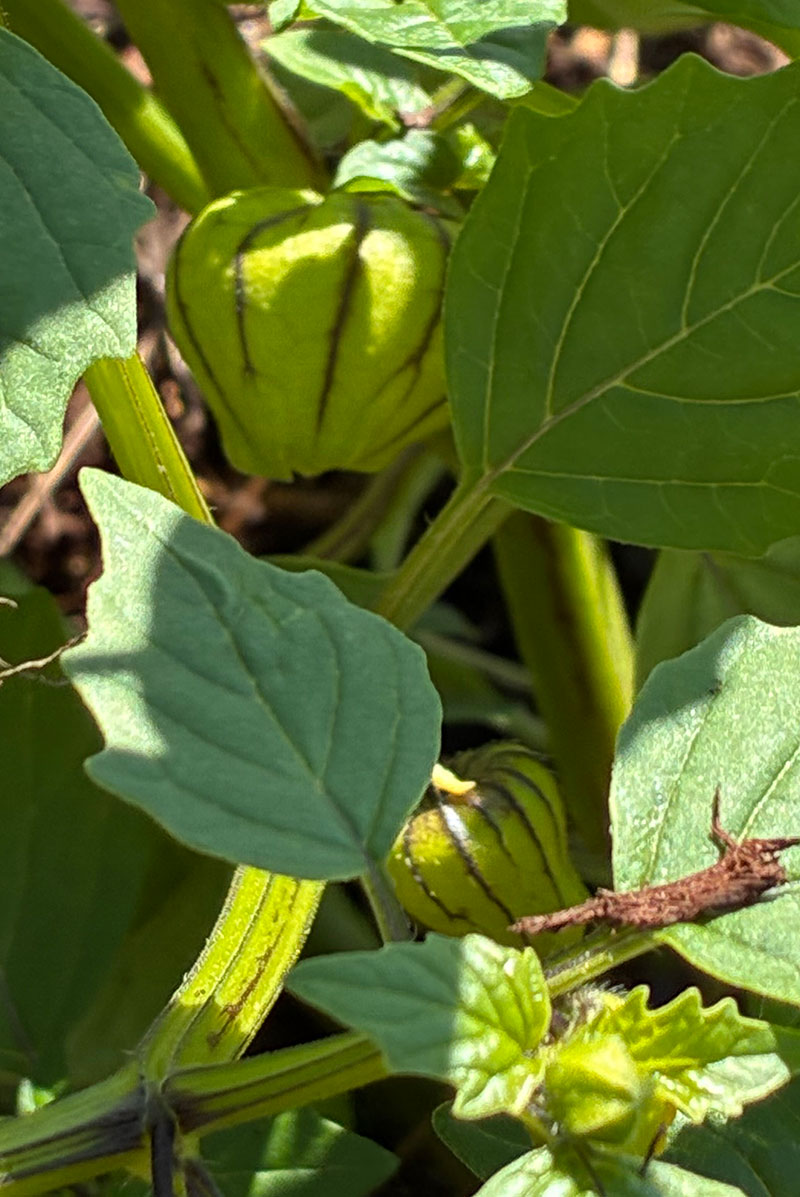 |
The compost piles are also thriving and have become home to many snakes who seem to enjoy the warmth and, possibly, the proximity to other creatures who are attracted for their own reasons. Fortunately, there are no poisonous snakes in our area so we’re all living together quite happily.
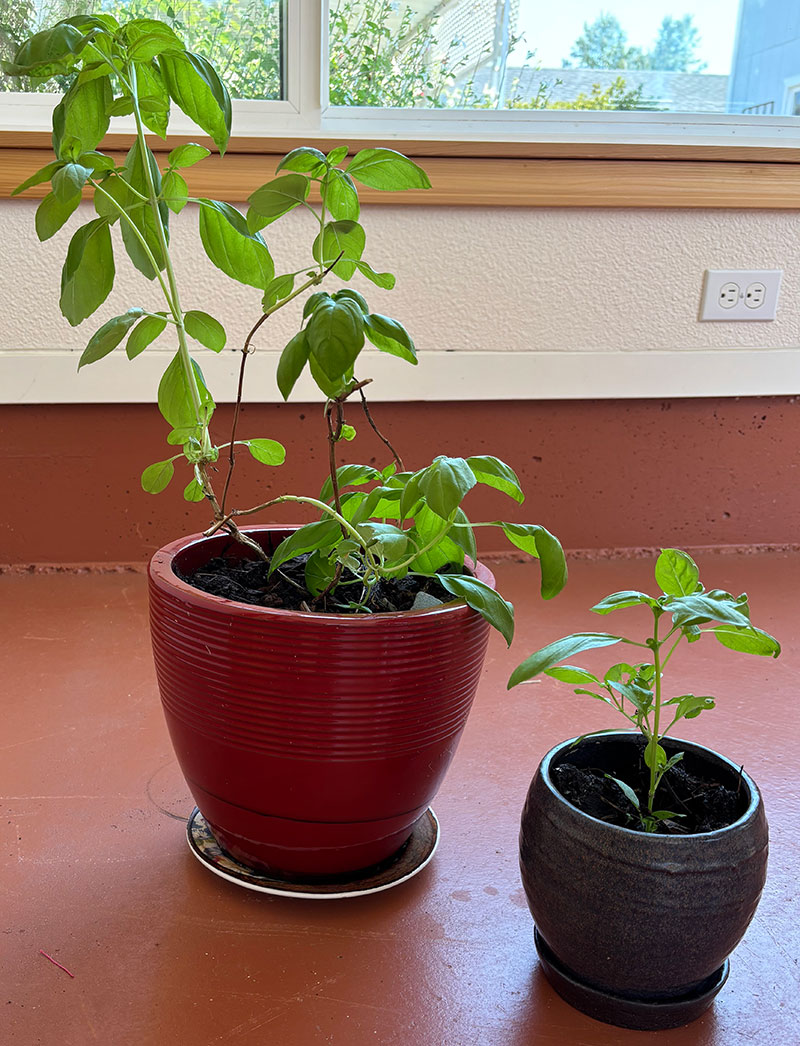 I suspect our compost is going to become our “claim to fame.” It’s astonishing to see what it can do for a plant. I wish I had a “before” picture of this potted basil, but a description will have to do. It was at death’s door. Only a few unhealthy leaves at the ends of sprawling, spindly stems. It was replanted with the same soil mixture that all the plants are getting, got a dressing of compost, and voilà!
I suspect our compost is going to become our “claim to fame.” It’s astonishing to see what it can do for a plant. I wish I had a “before” picture of this potted basil, but a description will have to do. It was at death’s door. Only a few unhealthy leaves at the ends of sprawling, spindly stems. It was replanted with the same soil mixture that all the plants are getting, got a dressing of compost, and voilà!
The other thing that has been a tremendous boon to the plants is getting them off of salt water and onto fresh water. Of course, we had no idea that the water softening system we installed in the house was not limited to the house. It turns out that the folks who installed it neglected to tell us that because of the position of the well pump, with pipes running under the concrete floor of the garage, it was not possible to limit the treatment of the water to only the house. So, for their entire lives the first trees planted on the property, and everything planted subsequently, has been drinking salt water. Plants really don’t do well with salty water. The change in them since switching to clean water is dramatic.
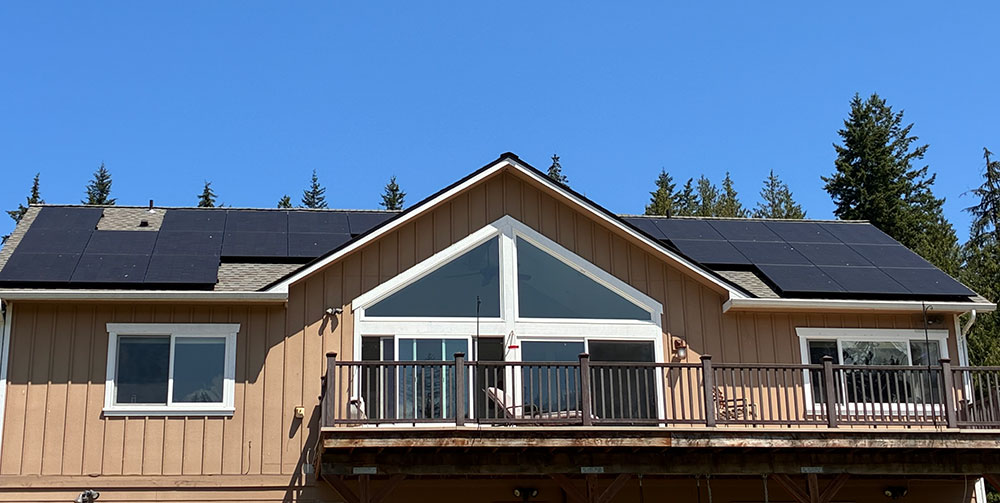
And to conclude, an update on the solar. All inspections have been completed, and as of Monday we’ve been operating solely on solar energy. It feels like an enormous accomplishment. When we got solar power at the Monastery it was a matter of buying components, figuring out how they worked, putting them all together, and that was that. Now there are lots and lots of hoops to get through and it’s so worth it. Yesterday we produced just shy of 80 kWh (kilowatt-hours) of power. The US Energy Information Administration says the average U.S. household uses about 30 kWh per day. Last year during July/August we averaged 26.1 kWh per day. Quite a contribution we can make! And, since Rosie, (the Farm truck) and, when we are able to secure one, an electric Skid Steer will be solar-powered, the benefits will only grow.
In gasshō,
ch

